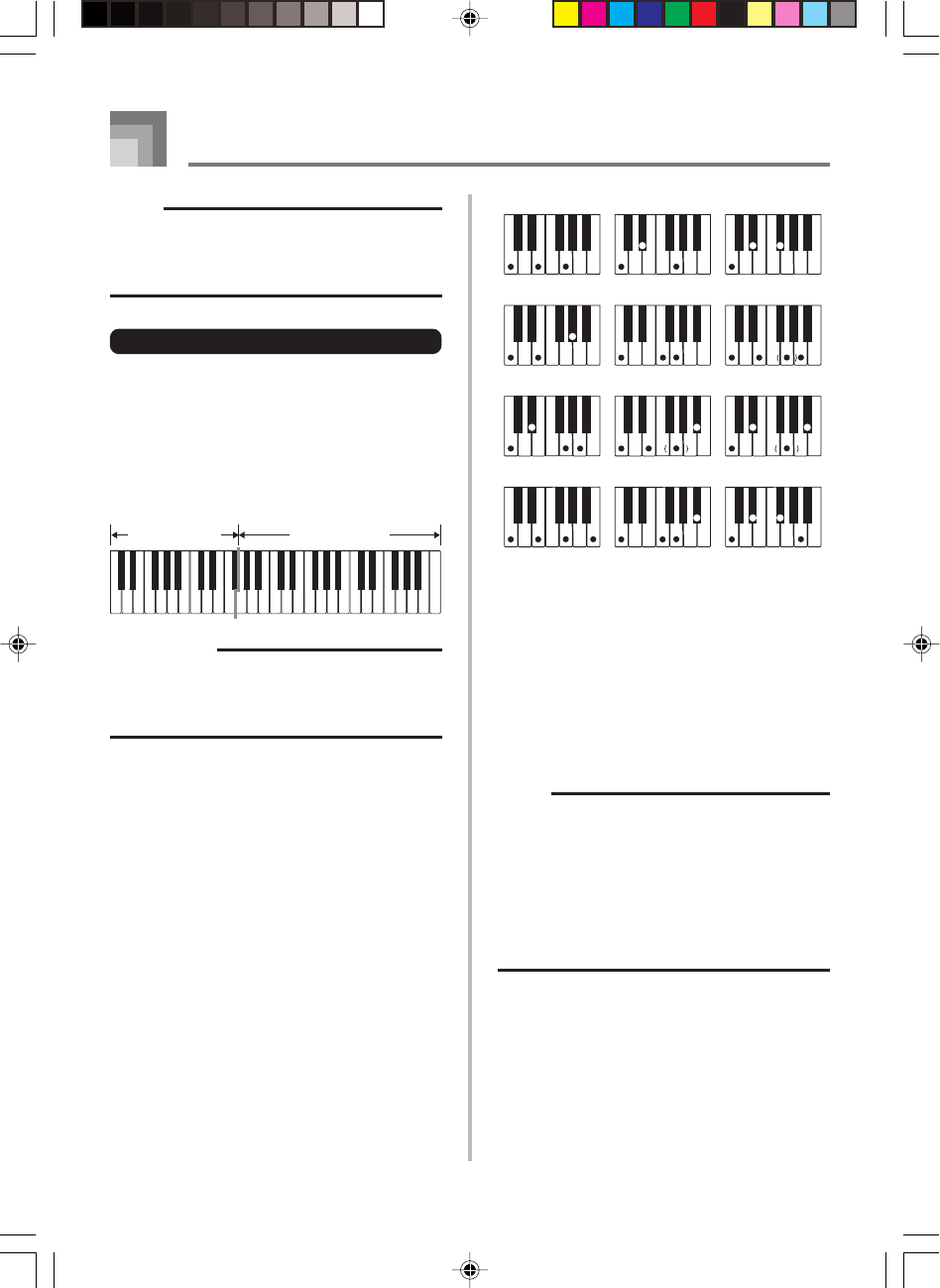
E-20
Selecting a Rhythm
278A-E-022A
CCmCdim
Caug*
1
Csus4 C6*
1, 3
Cm6 C7*
2
Cm7*
2, 4
CM7*
2
C7sus4 Cdim7*
1
See the “Fingered Chord Chart” on page A-4 for
details on playing chords with other roots.
*1: Inverted fingerings cannot be used. The lowest
note is the root.
*2: The same chord can be played without pressing
the 5th G.
*3: The same chord can be played without pressing
the 3rd E.
*4: The first inversion is not supported, but the
second and third inversions are available.
NOTE
• Except for the chords specified in note
*1
above, inverted fingerings (i.e. playing E-G-
C or G-C-E instead of C-E-G) will produce the
same chords as the standard fingering.
• Except for the exception specified in note
*2
and note
*3
above, all of the keys that make
up a chord must be pressed. Failure to press
even a single key will not play the desired
FINGERED chord.
NOTE
• It makes no difference whether you press
black or white keys to the right of a major
chord key when playing minor and seventh
chords.
FINGERED
FINGERED provides you with a total of 12
different chord types. The following describes the
FINGERED “accompaniment keyboard” and
“melody keyboard”, and tells you how to play a
C-root chord using FINGERED.
FINGERED Accompaniment Keyboard and
Melody Keyboard
Melody keyboard
Accompaniment
keyboard
IMPORTANT!
• The accompaniment keyboard can be used
for playing chords only. No sound will be
produced if you try playing single melody
notes on the accompaniment keyboard.
MA-170_E17_24.p65 03.10.8, 0:39 PM20


















